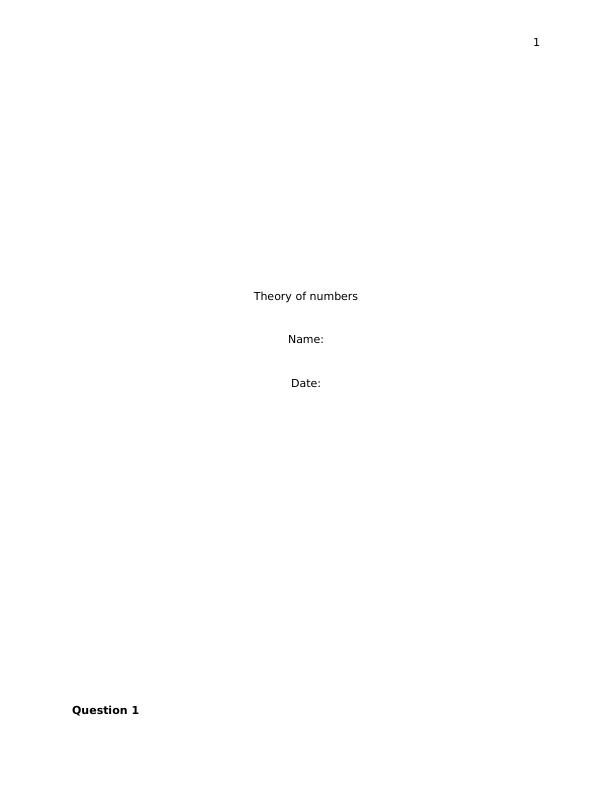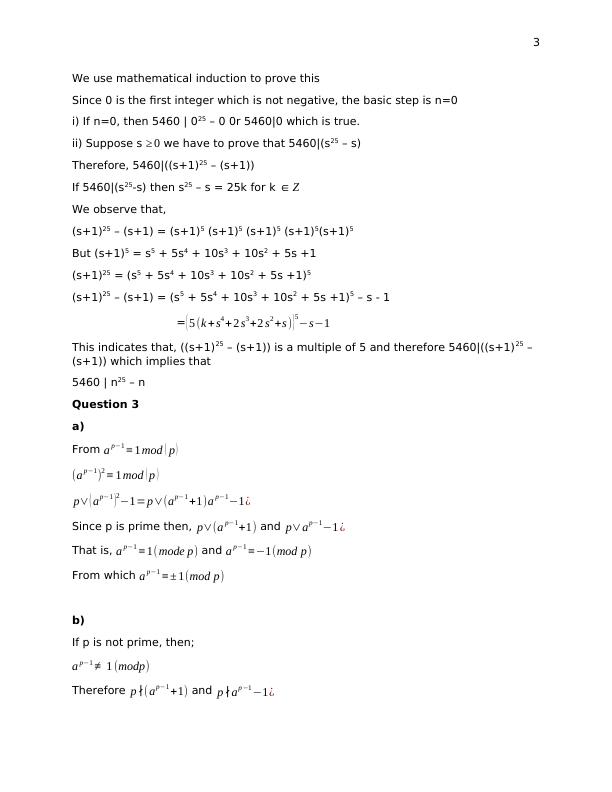Theory of Numbers
Compute least residues, prove divisibility, prove congruence, and use contrapositive of Fermat's Little Theorem to show that 30030 is not prime.
8 Pages915 Words100 Views
Added on 2022-12-22
About This Document
This document contains solved assignments and essays on the theory of numbers. It covers topics such as Fermat's little theorem, congruence, mathematical induction, pseudoprimes, Euler's theorem, binomial theorem, and more.
Theory of Numbers
Compute least residues, prove divisibility, prove congruence, and use contrapositive of Fermat's Little Theorem to show that 30030 is not prime.
Added on 2022-12-22
ShareRelated Documents
End of preview
Want to access all the pages? Upload your documents or become a member.
LSFR and GCD Calculation
|5
|757
|184
Cryptography and Mathematics: LSFR, GCD and Fermat Theorem
|6
|784
|146
Number Theory Assignment #7
|8
|3084
|1
Cryptology in practices
|7
|669
|35
Theory of Numbers
|9
|1675
|1
Assignment on Discrete Mathematics
|3
|631
|692



